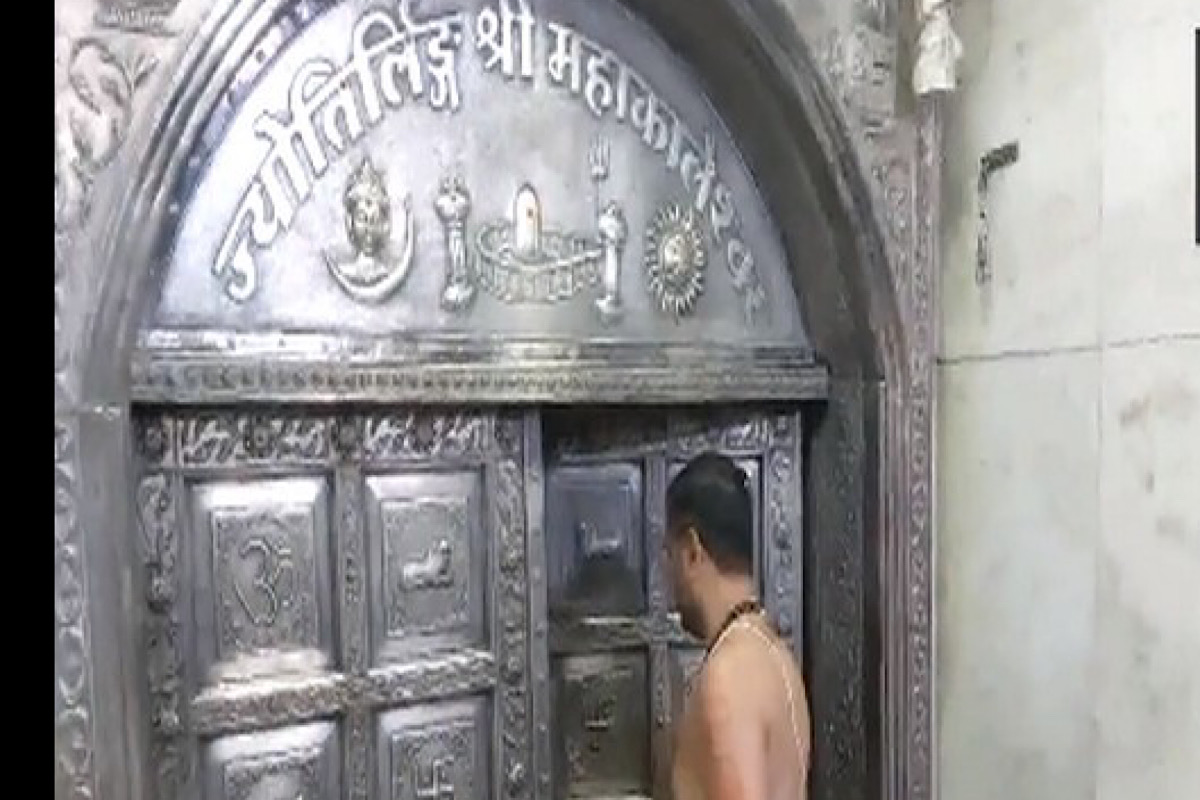PM Modi on 3-day visit to 3 states–MP, Bihar, Assam–from Sunday
According to the Prime Minister’s Office (PMO), the Prime Minister will visit Madhya Pradesh, Bihar and Assam from February 23-25.
Mahakaleshwar Temple in Madhya Pradesh’s Ujjain was washed with the water of holy rivers after the lunar eclipse.

The priest also performed 'Bhasin Aarti' at the temple premises (photo:ANI)
Mahakaleshwar Temple in Madhya Pradesh’s Ujjain was washed with the water of holy rivers after the lunar eclipse.
Keeping in view with the traditions, the priests also performed ‘Bhasm Aarti’ at the temple premises while devotees chanted, meditated and performed havan at Har Ki Pauri in Uttarakhand’s Haridwar.
Advertisement
The last lunar eclipse of 2023 has started. The partial lunar eclipse which will take place on Saturday night at 11:31 pm has started.
Advertisement
The eclipse was visible in different parts of the country including Nehru Planetarium in Delhi, West Bengal’s Siliguri, Gujarat’s Rajkot and Mumbai’s Chembur.
Although it is a shadow now, the lunar eclipse will be visible in Delhi on October 29, 2023 and will start at 1:06 am and end at 2:22 am. The special thing is that this is not a complete lunar eclipse but a partial lunar eclipse, an official said.
Special telescopes and big binoculars have been installed in the Nehru Planetarium here in National Capital to view this lunar eclipse.
“This is the last lunar eclipse of 2023… The eclipse started at 11:31 pm (28.10)…A partial eclipse will become visible at 1:05 am in Delhi. It will be most visible at 1:44 am…The event will end at around 3:56 am…This is a partial lunar eclipse in which only 6 per cent of the Moon’s portion will fall under the Earth’s shadow…,” said OP Gupta, a retired senior engineer at Nehru Planetarium on the lunar eclipse.
Some people interested in astronomy have also come to Nehru Planetarium to see the lunar eclipse, they said.
A lunar eclipse is an astronomical event that occurs when the Moon moves into the Earth’s shadow, causing the Moon to be darkened.
Such alignment occurs during an eclipse season, approximately every six months, during the full moon phase, when the Moon’s orbital plane is closest to the plane of the Earth’s orbit.
This can occur only when the Sun, Earth, and Moon are exactly or very closely aligned (in syzygy) with Earth between the other two, which can happen only on the night of a full moon when the Moon is near either lunar node.
The type and length of a lunar eclipse depend on the Moon’s proximity to the lunar node.
Advertisement